 Your new post is loading...
 Your new post is loading...
[00:00:10] You know what keeps them moving and growing and living? Tell me. It’s other catfish or that predator. So, if we never had predators in our lives. We’d stay stuck and we progress nothing. So every time we ask, “God, take away the stress, God, take away this issue,” we’re asking God to make us weaker, not stronger. [00:00:33] Because instead of asking like, “Hey, God, make me more creative, make me more passionate, make me more patient”. We ask, “Hey, take away this”. [00:00:45] But then we still want everything else that comes along with it. How does that work? [00:00:49] It’s easy. I don’t know. I mean, if you think about it, you know, from the first time we’re born, Danny. It’s not easy. Right. You’ve got to be one in a trillion sperm, really, and only to God, it’s very, very clear that, if you don’t get to that egg first? Done. Right. You’re done. So from the moment we’re given a chance, we’re on the point of destruction from the beginning. Exactly. So, in essence, why did that sperm get to that egg? Right. So you asked. It fought through. Fought through, right. [00:01:27] So, when you think of everything else as far as people complain, how people say, “oh, you know, I want more money, I want this”. But they don’t look at everybody’s backstory, the back end. And then behind the curtains, they think, “oh, man, Dr. Jimenez, you’re a doctor”. Sure, you don’t know how many times you’ve lost and rebuilt your practice or you’re a gym owner and you have it made. You don’t know how many times you have to go in at 4:00 in the morning to get a work out because you have to train people all day long to ensure that this business stays afloat. You know? Right. People don’t see that back end. Right. You know, they’re quick to say, “oh, it must be easy”. No, it’s not easy until you step into the person’s shoes because you’re the one that has to sign the checks. You’re the one that has to stay up at night and figure out payroll. You’re the one who has to be creative and figure out how you’re going to make ends meet. You’re the one that constantly has to be on it. You know, as much as you want to kick back and say whatever and do this. Well, I would love to work out four to five hours a day. That my passion. Is it your passion? It’s my passion. And do we? No, no. Right. What do we have to do? We have to be meticulous. We have to be disciplined. And we have to keep, I’m sure, we have to keep a proper order to ensure that we stay on top of schedule. Yes or no? Absolutely. Exactly. You know, so I’m saying at the end of the day is, if you don’t have something chasing you, you become fat and dormant and you become lazy. [00:02:54] I think nature is designed to eliminate you. Alex would say, you know, it’s survival of the fittest limiting the species or whatever he’d call it when he’s in biochemistry. You know, I got to tell you, it’s not easy to be a business owner. It’s not. It’s not easy when you have no sleep. [00:03:15] Ever since I’ve known you, you’ve put time in from early hours and you’re here from 430 in the morning and here. What time is it now? You’re here. You’re here. And we’re here sharing some stories. You know, it’s one of those things where it’s going to be nonstop all our lives. [00:03:29] But here’s the thing. If you don’t do it, it doesn’t stimulate you to become good at what you do. Right. You become lethargic and everything goes bad. Literally, you slowly begin the process of ceasing to exist. Right. [00:03:45] So, we all need rest. Right? Right. To rejuvenate. Get creative. It’s scientifically proven. You need that to reset. You have to. Otherwise, you burn out. Right? Right. But after how many days of rest? One. Two. Where you just get, disconnected, spastic. You know, you’re kind of like, “All right, cool. I rested enough. I’m good”. You don’t stay stuck there. [00:04:12] No, no, no, no. And I pray for vacation. Right. And when I get it, after about three days, I’m like, OK. Right. All right. I’m done. Let’s go. Yeah, OK. What am I going to break? What am I going to do? That’s how we are. Exactly. But that’s what makes you so successful, right? Yeah, well, it drives us. And it drives us in creating who we are. And it also gives us a vision as to what we’re going to do. You know, Danny, when we start these podcasts, we want to get a little bit or tell the people a little bit about the story of what you do. And tell them about, you know, where you’ve been and what’s been happening with you. OK. So for me, it’s very important to share with the people what is actually happening. [00:04:59] I’ve always been one to say, you know, I see how hard you work. And I see how much effort you put into things. But I’d like to know a little bit about you as to what actually made you and what kind of makes you click a little bit. When I actually discuss these things, I want to ask you what made you begin PUSH, what made you start this massive, massive organization. [00:05:25] I want to reach the masses of people and help people. Continued in the article...
The knee is the largest joint in the human body, where the complex structures of the lower and upper legs come together. Consisting of three bones, the femur, the tibia, and the patella which are surrounded by a variety of soft tissues, including cartilage, tendons and ligaments, the knee functions as a hinge, allowing you to walk, jump, squat or sit. As a result, however, the knee is considered to be one of the joints that are most prone to suffer injury. A knee injury is the prevalent cause of knee pain. A knee injury can occur as a result of a direct impact from a slip-and-fall accident or automobile accident, overuse injury from sports injuries, or even due to underlying conditions, such as arthritis. Knee pain is a common symptom which affects people of all ages. It may also start suddenly or develop gradually over time, beginning as a mild or moderate discomfort then slowly worsening as time progresses. Moreover, being overweight can increase the risk of knee problems. The purpose of the following article is to discuss the evaluation of patients presenting with knee pain and demonstrate their differential diagnosis.
The tendons are powerful soft tissues which connect the muscles to the bones. One of these tendons, the quadriceps tendon, works together with the muscles found at the front of the thigh in order to straighten the leg. A quadriceps tendon rupture can affect an individual’s quality of life. A quadriceps tendon rupture can be a debilitating injury and it usually requires rehabilitation and surgical interventions to restore knee function. These type of injuries are rare. Quadriceps tendon ruptures commonly occur among athletes who perform jumping or running sports.
Chondromalacia patellae, also referred to as runner’s knee, is a health issue in which the cartilage beneath the patella, or kneecap, becomes soft and ultimately degenerates. This problem is prevalent among young athletes, however, it may also develop in older adults who suffer from arthritis of the knee. Sports injuries like chondromalacia patellae are frequently regarded as an overuse injury. Taking some time off from participating in physical activities and exercise may produce superior outcomes. In the instance that the individual’s health issues are due to improper knee alignment, rest may not offer pain relief. Symptoms of runner’s knee include knee pain and grinding sensations.
Sinding-Larsen-Johansson, or SLJ, syndrome is a debilitating knee condition that most commonly affects teens during periods of rapid growth. The kneecap, or patella, is attached to the shinbone, or tibia, from the patellar tendon. The tendon connects to an expansion plate at the bottom of the kneecap throughout growth. Repetitive stress on the patellar tendon can make the growth plate within the knee become inflamed and irritated. SLJ mainly develops in children and adolescents between the ages of 10 and 15 because that is when most people experience growth spurts. SLJ is most common in young athletes due to excess or repetitive strain in the knee.
The piriformis muscle extends to the top of the femur around the sciatic nerve. The femur, as previously mentioned, is the large bone in the upper leg. The piriformis muscle functions by helping the thigh move from side to side. A piriformis muscle spasm, or any other type of injury and/or condition along the piriformis muscle, can place pressure on the sciatic nerve and cause pain and discomfort. The result is piriformis syndrome. Piriformis Syndrome Causes and Symptoms
Sciatic nerve pain, or sciatica, is one of the most prevalent symptoms of piriformis syndrome. The pain and discomfort, however, may be felt in another part of the body. This is known as referred pain. Other common symptoms of piriformis syndrome include tingling sensations and numbness; tenderness; difficulty sitting along with pain while sitting and pain in the buttocks and thighs with physical activities.
The piriformis muscle can easily become damaged or injured from periods of inactivity or an excessive amount of exercise. Some common causes of piriformis syndrome include overuse; repetitive movements involving the legs; sitting for lengthy periods of time; lifting heavy objects; and extensive stair climbing. Sports injuries or automobile accident injuries can also harm the piriformis muscle and cause it to compress the sciatic nerve.
Baseball Injuries: The crack of a ball against your bat, good! The crack of a back or shoulder, bad! Baseball, the nationwide pass time, heats up in summer. From little league on up, individuals enjoy swinging the bat and running the bases. Unfortunately, the movements baseball requires can wreak havoc on a person's body, leaving them with strained backs, hurt shoulders, and pulled muscles. According to Livestrong, there are over 600,000 injuries from playing baseball per year, and 5-14 year olds suffer from 117,000 of them. The aspects of the game — running, sliding, twisting, and jumping — cause the body to maneuver into awkward positions. If you or a loved one has slid into first and felt a pop, or twisted to catch a fly ball and felt a snap, chiropractic care offers several ways to help put you on the road to a complete recovery. Baseball Injuries: Manage PainBaseball injuries frequently involve large muscles, resulting in a high degree of pain. Chiropractic treatment offers relief from severe pain of many injuries involving the spine, muscles, and joints. Using spinal adjustments, a chiropractor is able to help the body align itself properly, and sooth the injured area. Once the body functions normally, pain is diminished. Sometimes this can be accomplished in one visit, while other injuries require a few sessions before pain diminishes. Increase MobilityA strained neck, pulled back, or overextended knee may cause the individual serious issues in being able to move. Limping around slowly is nobody's idea of fun! Chiropractic adjustments are proven to help reduce inflammation and improve mobility in many injury cases. If that last baseball game has you unable to put weight on your knee, your neck won't twist without pain, or your shoulder won't lift your arm, it may be time to visit a chiropractor for evaluation.
Promote HealingThe premise of chiropractic care is to treat the entire body as a whole, not just the injured part. As the body becomes better aligned, it functions at a higher capacity, and begins to heal itself. Most injuries resulting from playing baseball, such as tendonitis, strained muscles, torn rotator cuffs, and the like, heal faster with chiropractic care. Increased blood flow to the injured area, and less pressure on the body part (usually due to misalignment of the spine) allow the injured area to regenerate, and a greater chance to begin healing faster than without chiropractic care. Avoid MedicationEven over-the-counter pain and anti-inflammatory drugs cause side effects in certain individuals. Allergies, stomach issues, and other reasons result in many injured people steering clear of medication to relieve pain and inflammation. Chiropractic care provides these individuals a drug-free, less invasive way to help manage the pain and promote healing. More people every year are choosing to visit a chiropractor for pain relief instead of popping pain medicine. Before jumping into a baseball game, or even if you or your children play regularly, remember that prevention is worth its weight in gold. Take care of your body by stretching beforehand, being aware of your physical limits, maintaining proper posture, and staying hydrated during the game. With a little extra effort, the chance of a baseball injury can be dramatically decreased. Summer fun often includes activities such as baseball, whether in a league or in your back yard with your family. Avoid suffering from an injury as best you can, and, if you or your child end up with an achy knee, twisted elbow, or smarting shoulder, call you chiropractor to schedule a thorough evaluation as quickly as possible.
With the presence of blood flow restriction training in discussions surrounding intensity coaches and physiotherapists, people are beginning to seek out programs for the best training procedure which might help them reach new levels of athletic performance. In arenas that were competitive; an athlete’s practice volume is often restricted by their capacity, not their desire to keep training. With elite athletes there are a handful of variables that influence recovery; sleep, nourishment, training volume, the modality of training, body work…etc.. Athletes are looking for everything they can to be able to recuperate faster so they can train harder. Blood flow restriction training is an alternative and should be included in the dialogue of methods which help you recover.
Muscle strains are a common injury among athletes, together with the hamstrings being susceptible to injury in sports which involve high speed running. As an example, musculotendon strains accounted for almost half of accidents in the National Football League team throughout pre-season practice, with hamstring strains being the most common and requiring the most time (average of 8.3 days) apart from game. From the Australian Football League, hamstring strains are the most frequent injury with approximately six accidents per club a year, and 33 percent of those being recurrent injuries. The susceptibility of the hamstrings to harm during high speed running is linked to the biomechanical demands put on the muscle, although debate continues regarding whether injury occurs through the stance or swing phase of a gait cycle. This problem is applicable for designing the type of resistance training which may be effective for preventing recurrent or first hamstring injuries, among others. Specifically, injury prevention programs would ideally incorporate aspects (e.g. lower extremity positions, muscle lengths, contraction type) that are most similar to the conditions related to injury, such that the athlete could maximize the gains in functional strength and minimize the risk of future damage or injury.
Athletes face extreme pressure to return to play when they are hurt however, the true challenge for physicians is to get them back in the game safely. Athletes should be tough and maintain a positive attitude whilst regularly going through pain. When they’re made to sit out due to an accident, they should be focused and motivated to return to play as quickly as possible. They rehabilitate and rest as they trust that their bodies will ready after a full treatment plan. This is the idealistic perspective of injury associated with athletes in their specific sport or physical activity. However, the reality is that accidents are an unavoidable by product of being an athlete and the transition from “active athlete” to “injured athlete” and back to “active athlete” does not always happen without complications. Injured athletes fight with anxiety, frustration, anger and sometimes depression during their time away from play, which might also keep them from following their rehabilitation program effectively. Additionally, the return to the sport itself yields a fresh pair of adversities as athletes should browse through personal fears and a desire to come back to their pre-injury condition with the support of their family and healthcare physician.
A whole group of nutritional supplements has surfaced in the past ten years, concentrated on boosting anabolism and so increasing circulation. However, what if I told you that the opposite could be true? If I told you that occluding blood flow to muscles could have an anabolic effect, what would you say? Blood flow restriction (BFR) training has years of research to support its effectiveness and in this article I will explain what it is and how to use it to augment your training. What is Blood Flow Restriction Training? Quite simply, BFR training includes restricting the venous return of blood circulation from the muscle. The objective isn’t to restrict blood circulation to the muscle, but rather prevent blood flow from returning to the muscle, i.e. you don’t need to restrict the blood circulation to the muscle, only the venous return from the muscle, causing the blood to pool in the muscle. This is accomplished by use of a blood pressure cuff or perhaps more practically using knee wraps tightly fastened round the limb(s).
The tensor fascia latae (TFL) is a problematic muscle for many individuals. Oftentimes, it contributes to tightness related to the IT band and is dominant within the gluteus medius. Its function are hip flexion and abduction, and it has a tendency to be tight in many runners and athletes. Performing soft tissue mobilization will help resolve tightness in addition to promote regeneration and recruitment of the gluteus medius. A lot of men and women argue the effectiveness of foam rolling up the IT band itself. While many healthcare professionals are not inclined to ignore this fact altogether, it is believed that polyurethane rolling likely has a much greater impact on the length/tension of the soft tissue beneath and associated with the IT band (e.g. glutes, quads, hamstrings and TFL). The TFL is frequently full of trigger points. You will find a variety of foam roller exercises that you can do, and choosing the stretch or exercise is dependent on the muscle group that you want to massage, in this case, the tensor fascia latae.
There are many factors that play a role in the dynamics of collisions. These include vehicle design and type, speeds, angles of approach, kinetic & potential energy, momentum, acceleration factor, friction… the list is quite long. There are a few constants in which we are curious. These constants are the building blocks of the planet and they make the world of collisions quantifiable and predictable. Within this two-part series we will explore the factors which have the most influence in low speed collisions and how these factors are associated with injury. Note: nothing about these writings is inclusive, there is too much material to explore in depth. The objective of these writings is to present the concepts.
|
The knee is one of the most complex joints in the human body, consisting of the thigh bone, or femur, the shin bone, or tibia, and the kneecap, or patella, among other soft tissues. Tendons connect the bones to the muscles while ligaments connect the bones of the knee joint. Two wedge-shaped pieces of cartilage, known as the meniscus, provide stability to the knee joint. The purpose of the article below is to demonstrate as well as discuss the anatomy of the knee joint and its surrounding soft tissues.
Knee pain is a common health issue among athletes and the general population alike. Although symptoms of knee pain can be debilitating and frustrating, knee pain is often a very treatable health issue. The knee is a complex structure made up of three bones: the lower section of the thighbone, the upper region of the shinbone, and the kneecap. Powerful soft tissues, such as the tendons and ligaments of the knee as well as the cartilage beneath the kneecap and between the bones, hold these structures together in order to stabilize and support the knee. However, a variety of injuries and/or conditions can ultimately lead to knee pain. The purpose of the article below is to evaluate patients with knee pain.
The knee is a made up of a variety of complex soft tissues. Enclosing the knee joint is a fold at its membrane known as the plica. The knee is encapsulated by a fluid-filled structure called the synovial membrane. Three of these capsules, known as the synovial plicae, develop around the knee joint throughout the fetal stage and are absorbed before birth. However, during one research study in 2006, researchers found that 95 percent of patients undergoing arthroscopic surgery had remnants of their synovial plicae. Knee plica syndrome occurs when the plica becomes inflamed, generally due to sports injuries. This often takes place in the center of the kneecap, known as medial patellar plica syndrome.
Osgood-Schlatter disease is a common cause of knee pain in growing adolescents. It is characterized by the inflammation of the site below the knee where the tendon from the kneecap, or the patellar tendon, attaches to the shinbone, or tibia. Osgood-Schlatter disease occurs during growth spurts when muscles, bones, tendons, and other tissues shift rapidly. Physical activities can place additional stress on the bones, muscles, tendons and other complex structures of young athletes. Children and adolescents who participate in running and jumping sports have a higher chance of developing this condition. However, less active children and adolescents may also experience this well-known health issue. In the majority of instances, Osgood-Schlatter disease will resolve on its own and the pain can be managed with over-the-counter drugs and/or medications. Stretches and exercises can also help improve strength, flexibility and mobility. Alternative treatment options, such as chiropractic care, can also help relieve pain and restore the patient’s well-being.
Patellar tendinitis is a common health issue characterized by the inflammation of the tendon which joins the kneecap, or patella, to the shinbone, or tibia. The knee pain associated with this problem may range from mild to severe depending on the circumstances of the knee injury. Patellar tendinitis, or jumper’s knee, is a well-known sports injury among athletes who play in basketball and volleyball. Among recreational volleyball players, an estimated 14.4 percent of them have jumper’s knee, where the incidence is even higher for professional athletes. An estimated 40 to 50 percent of elite volleyball players have patellar tendinitis.
There’s always a particular risk for athletes when it comes to sports-related injuries, or sports injuries, particularly when participating in physical activities. Moreover, contact sports, such as soccer, baseball, football and basketball, tend to have higher injury rates than any other sport. Twice as many men suffer sports-related injuries in contrast with females as a consequence of the types of sports that they most commonly engage in. Whether you’re a seasoned and experienced athlete or you simply play as a weekend warrior, there’s always a chance of experiencing a sports injury. Below, we will discuss several of the most common types of sports injuries, or sports-related injuries.
Nobody likes to be sidelined with an undesired injury. Among the goals of sports medicine professionals and specialists is to try to restore an athlete back to action. Returning too soon, however before restoration or healing has taken place, can put an athlete at an increased risk for re-injury and down time. With the ideal treatment and care plan for sport accidents and injury, from early identification and proper treatment to full functional rehabilitation, you can often safely accelerate your return to perform. Why does it seem that professional athletes come back to play so much quicker than the normal person or athlete? Professional athletes are often, at the time of injury, in tremendously good physical conditioning. This fitness level helps them in various ways. Various studies have demonstrated that conditioning the body properly can not only prevent injuries, it may also lessen the severity of an injury and speed up recovery.
According to the American College of Sports Medicine, to achieve an increase in muscle size and strength, you want to do 8 to 10 repetitions of an exercise. A moderate to high intensity is deemed to be 65 to 80 percent of their patient’s one rep maximum (the maximum amount of weight a person can lift 1 time). However, the majority of patients that are injured can’t deal with this kind of load, consequently restricting their capacity. So again we’re faced with the question: Just how can we achieve hypertrophy and gain muscle strength without using heavy loads? The solution involves using a tourniquet to restrict blood flow into a muscle. This technique is known as blood flow restriction training (BFR). According to the most recent research in the event the appropriate blood flow restriction therapy protocols are utilized, the benefits of the training are equal to those found when using 70 percent of an individual’s maximal load, while using as little as 20 to 30 percent of somebody’s maximum load. The secret is that restricted blood flow training allows healthcare professionals, such as physical therapists, to make a localized region of exercise that is anaerobic.
Imagine you trained well for a significant race, got yourself into form and cruised through the first half of the course without any issues, and were on pace for a nice PR. All of a sudden, you started to notice tightness in one of your hamstrings. In the beginning, it was a hindrance that could be ignored, but the tightness got steadily worse until your hamstring was a stiff, painful mass of tissue which cried out to cease. You slowed down, you ceased to stretch, massaged it, but nothing helped. Realizing that this was the conclusion of your race, you limped to the end, disappointed and frustrated that after six months of attentive, time-consuming preparations, some strips of muscular tissue in the back of your thigh had prevented you from attaining your goal. Does this situation sound familiar to someone or has this happened to someone you know?
Injury is a common occurrence in sport participation. Ask any athlete and they’ll tell you that one of the drawbacks they can experience in their specific physical activity is injury. Being hurt can mean a number of things to an athlete out of the pain they experience. Firstly, injury can bring a stop to training (i.e., coaching) and may indicate that what they’ve devoted lots of their time and energy and can too be removed quite suddenly (Crossman, 1997). Sport participation is a part of the identity of an athlete and so sports are a tremendous portion of their lives. When that is removed, albeit for a short time period, this can have a possible psychological effect on how an athlete views themselves. Additionally, injury can take away the positive reinforcements sport provides where athletes undergo a feeling of mastery, autonomy and sense of control (Deutsch, 1985). Injury might be thought of as a setback because sport is used by athletes as a means of managing anxiety, stress and depression, among other things.
BFR, or blood flow restriction training, has been utilized throughout a range of exercise modes. These include cycling, walking and strength training. When doing resistance training with blood flow restriction therapy, tight cuffs or pliers are commonly utilized. Virtually, blood flow restriction training is most frequently employed when utilizing resistance training with low loads of around 20 to 30 percent of 1RM and with wraps that are wrapped at a perceived tightness of 7 out of 10. When compression of the vasculature proximal to the muscles is achieved via other means, the expression blood flow restriction training is more commonly used. An alternative way of employing this pressure is through the usage of knee bends. This sort of blood flow restriction therapy can be termed blood flow restriction training that was sensible to distinguish it from the method in which inflated cuffs are utilized to produce a strain.
Self-myofascial release, also known as “foam rolling,” has changed from a once mysterious technique used solely by professional athletes, athletes, and therapists to a familiar everyday method for people at all levels of fitness.
Products, technology, and data have introduced an increasing array of training and recovery methods to the individual.
Self-myofascial release is a fancy word for self-massage, utilized to release muscle stiffness or trigger points. This technique can be performed using a foam roller, lacrosse ball, Theracane, or your own hands. By applying pressure to these painful areas, you are able to assist in the recovery of muscles and helping to restore them. Proper function means your muscles are healthy, elastic, and ready to perform at a moment’s notice.
Trigger points are referred to as “knots” which form in muscles. They’re unique and may be identified once they begin to refer pain. Pain referral, for our purposes, may be described as the pain felt when pressure is applied to a single area of their body, but the pain is felt or radiated in a different area.
|



 Your new post is loading...
Your new post is loading...

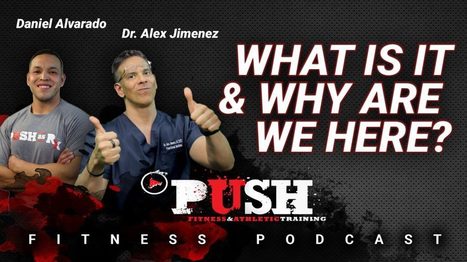

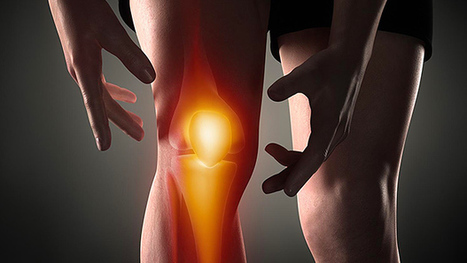

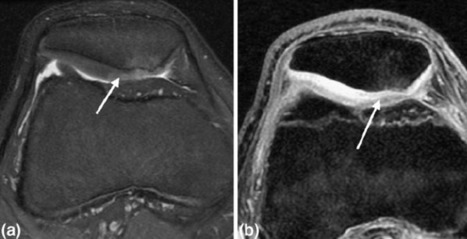
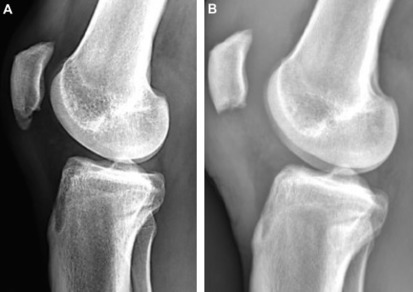
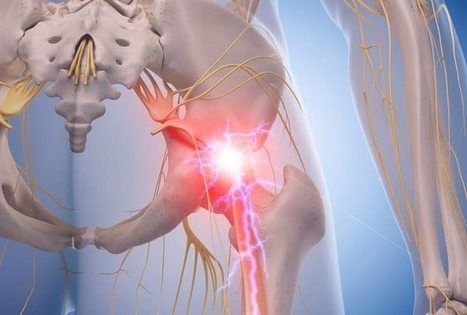
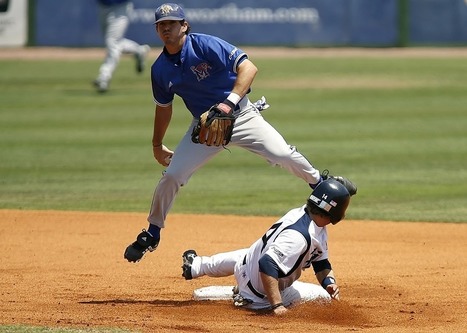
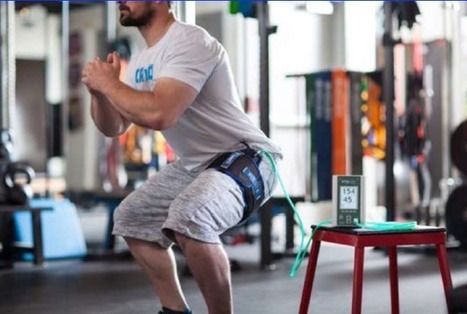






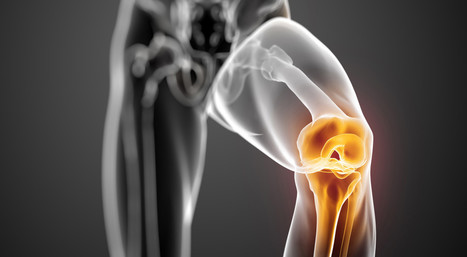
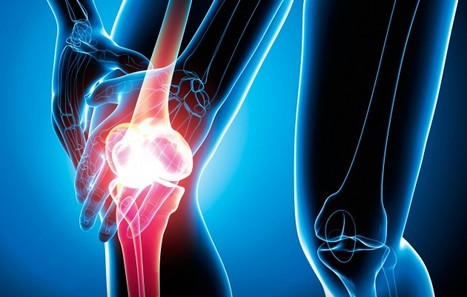
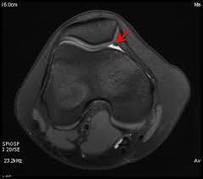
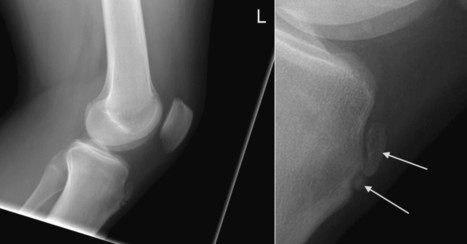
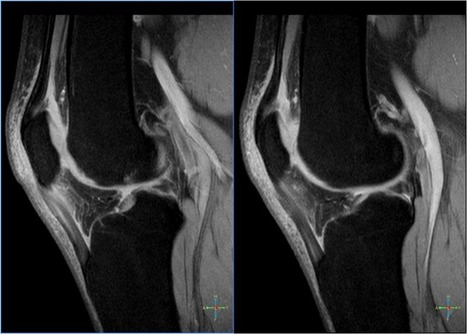
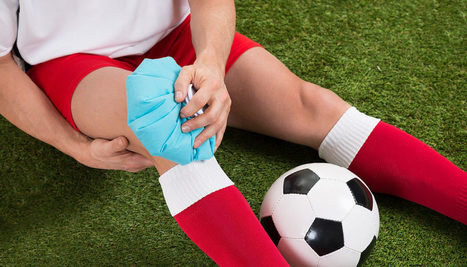



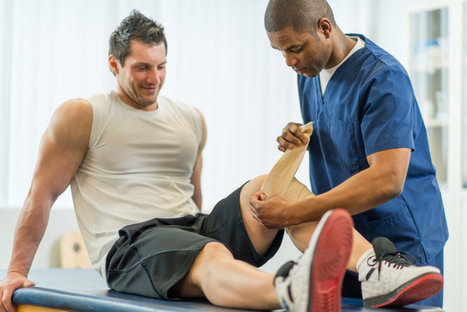
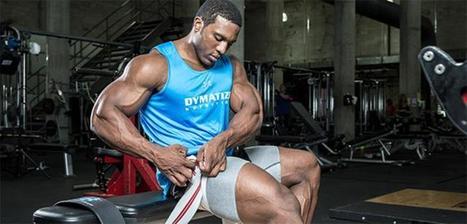






Dr. Alex Jimenez, chiropractor in El Paso, TX, talks to Daniel Alvarado, owner of the PUSH Fitness Center, in the PUSH Fitness podcast about his purpose for creating his business. For more information, please feel free to ask Dr. Alex Jimenez or contact us at (915) 850-0900.